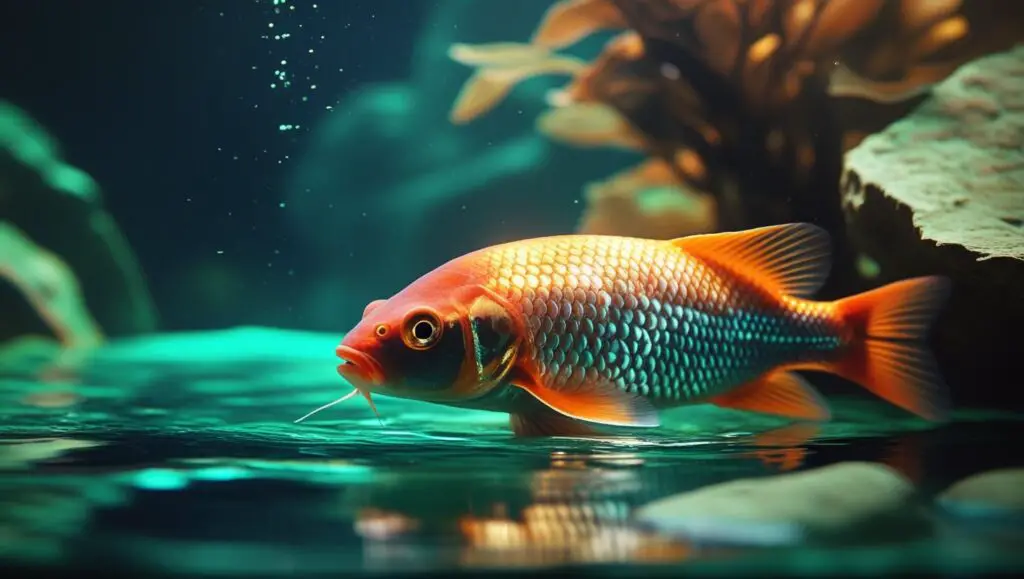Understanding fish behavior is both fascinating and essential for any aquarist or marine enthusiast. Among the most intriguing questions is: How can we tell if a fish is sleeping? Fish, unlike humans, do not have eyelids, and their resting behavior can easily go unnoticed. Yet, just like every living creature, fish need rest. In this comprehensive guide, we will explore in depth how to determine if a fish is sleeping, backed by observable traits, behavioral cues, and species-specific details.
What Does Sleep Look Like in Fish?
Fish do not sleep in the same way mammals do. Instead, they enter a state of reduced activity and metabolic rate, a kind of restful pause. During this time, most fish exhibit the following signs: Fish Is Sleeping
- Slower movements or stillness
- Reduced responsiveness to external stimuli
- Hovering near the bottom or hiding in secluded areas
- Color dulling or fading
- Staying in a consistent, sometimes unusual, posture
This form of rest is crucial for their health, allowing them to conserve energy, regulate biological rhythms, and maintain immune function.
Top Signs Your Fish Is Sleeping
1. Decreased Movement
One of the most obvious signs is a significant drop in movement. Fish that are usually active may suddenly float gently or rest on a substrate. They might hover near their favorite corner or log, appearing to pause all swimming activities. Fish Is Sleeping
2. Diminished Reaction to Surroundings
Sleeping fish typically show minimal or no reaction to light, noise, or changes in the environment. For instance, if you gently tap the aquarium glass and the fish does not respond as it normally would, it is likely asleep.
3. Lowered Position in the Tank
Many species prefer to rest near the bottom of the tank when sleeping. Others may sleep in vertical crevices, behind plants, or inside caves. This choice of sleeping spot is species-specific, and recognizing your fish’s preferred rest area helps in identifying when they are asleep.
4. Dull or Faded Coloration
Fish often appear less vibrant when they sleep, a biological adaptation likely meant to avoid predators by camouflaging. Don’t be alarmed if your brightly colored fish turns pale or dull overnight—this is often a normal part of its sleep cycle. Fish Is Sleeping
5. Unusual Postures
Sleeping fish may assume static or odd postures, such as floating slightly tilted, head down, or even lying on their sides. Though this can seem like illness at first glance, consistent timing (usually at night) suggests it is sleep-related behavior. Fish Is Sleeping

Do All Fish Sleep the Same Way?
Different species exhibit varied sleeping behaviors. Below are examples highlighting unique sleep patterns in popular aquarium fish:
Betta Fish
Bettas often sleep on broad leaves, tank ornaments, or the substrate. They may appear motionless or breathe very slowly. Despite their vibrant colors, bettas will often appear pale during sleep. Fish Is Sleeping
Goldfish
Goldfish exhibit a gradual slowdown in swimming, eventually settling near the bottom. Their dorsal fins might droop, and they remain in an almost trance-like state. Fish Is Sleeping
Tetras and Guppies
These small schooling fish often rest together near vegetation or low in the tank. They don’t always go completely still but drastically reduce their activity level.
Catfish
Bottom dwellers like corydoras or plecos tend to rest inside caves or under logs, showing near-complete stillness for extended periods.
How to Support Healthy Sleep in Aquarium Fish
Providing the right environment is key to ensuring fish can rest properly. Here are essential elements:
Maintain a Consistent Light Cycle
Fish rely heavily on circadian rhythms. Use a timer to ensure a consistent 12-hour light/dark cycle. Avoid turning lights on suddenly at night, which can stress sleeping fish.
Create Hiding Spots and Rest Zones
Rocks, driftwood, aquatic plants, and ornaments provide safe, dark areas for sleep. These structures mimic natural environments and encourage proper rest.
Minimize Nocturnal Disturbances
Avoid feeding, rearranging, or cleaning the tank during the night. The calmer the surroundings, the more effectively your fish will sleep.
Do Fish Dream While Sleeping?
While fish do not have REM (Rapid Eye Movement) sleep like mammals, recent studies suggest that zebrafish exhibit sleep-like brain activity, hinting at the possibility of basic dreaming or memory consolidation. However, this is still under research and not yet fully understood.
Can Fish Sleep with Their Eyes Open?
Yes. Fish do not have eyelids, so their eyes remain open even during sleep. Some species have a nictitating membrane—a thin, translucent film that offers slight protection—but it does not close like an eyelid.
How Long Do Fish Sleep?
Fish usually sleep at night, but some species are diurnal (daytime active) or nocturnal (nighttime active). Aquarium lighting should align with their natural rhythms. On average, fish sleep between 6 to 12 hours, often in short intervals, especially in species that need to maintain swimming motion to breathe.
How to Differentiate Between Sleep and Illness in Fish
It’s vital to distinguish between a sleeping fish and one that is unwell. Look for these contrasts:
| Behavior | Sleeping Fish | Sick Fish |
|---|---|---|
| Movement | Still, but stable | Erratic or listless |
| Color | Slight fading | Discoloration or blotches |
| Respiration | Slow and regular | Rapid or labored |
| Timing | During dark hours | All day, inconsistent |
| Posture | Consistent nightly position | Odd, floating upside-down, sinking |
If a fish remains inactive during the day, refuses to eat, or displays rapid gill movement, it’s best to consult a veterinarian or aquatic specialist.
Do Fish Sleep While Swimming?
Some species, such as sharks and tuna, must keep swimming to breathe. They exhibit unihemispheric slow-wave sleep, meaning one half of their brain sleeps while the other remains alert to guide movement. This allows continuous swimming without full awareness.
Do Aquarium Fish Need Total Darkness to Sleep?
While total darkness is ideal, fish can sleep in dim lighting. It’s best to replicate natural dusk conditions, gradually transitioning to full darkness. Excessive ambient room lighting or screen glare can disrupt their sleep.
Conclusion: Observing and Respecting Fish Sleep Cycles
Recognizing sleep in fish is key to understanding their well-being. By observing changes in movement, color, posture, and response to stimuli, you can accurately determine if your fish is resting. Ensure their environment is conducive to rest with consistent lighting, hiding spaces, and minimal disturbances.
With this knowledge, aquarists can not only identify sleeping fish but also enhance the quality of life in the aquarium.


Leave a Reply to Should I Use Braided Fishing Line? A Complete Guide for Anglers Cancel reply